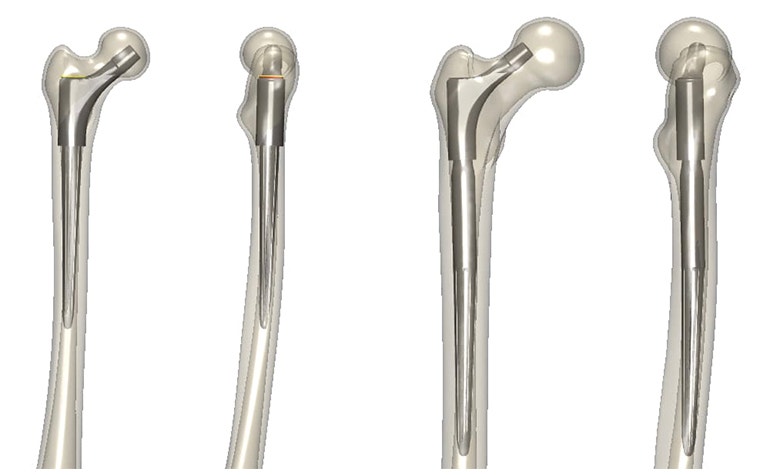EXPERT INSIGHT
Virtual Patients: A Reality in Orthopaedic Implant R&D

Virtual patients have been gaining attention as a way to augment pre-clinical tests and even clinical trials. While for many applications the concept is still in its infancy, the use of virtual patients has become standard practice in the development process of orthopaedic implants.
Companies such as DJO Surgical have been using virtual patients to accelerate implant development for several years now, and they are seeing clear technical and financial advantages. Adam Shallenberg, Engineering Manager for DJO’s hip segment, shared the company’s findings on hip implant improvements in one of our latest webinars.
What’s a virtual patient?
At its core, a virtual patient is a computer model of a patient, which can reliably predict the response of this patient to a certain treatment. A wide range of concepts fit this definition, from simple 1D blood flow models and finite element analyses to Bayesian networks estimating outcomes based on different combinations of key variables.
Virtual patients do not correspond to one known, real patient, but rather are typically either anonymous or synthetic. This is an important distinction from digital twins, where the model is paired with the real patient, and adjusted in time based on the real observed outcomes.


Virtual patients in orthopaedics
In orthopaedics, the term virtual patient refers to 3D bone models extracted from CT or MRI scans. These bone models can be measured digitally to give R&D engineers an idea of the range and statistical distribution of key dimensions in the target population. An implant design can be verified by virtually implanting its CAD file in any number of bone models and assessing geometric fit.
In some cases, finite element modeling is used to assess stress distributions or micromotion. The “specific” virtual patients, extracted directly from CT or MRI scans of (anonymized) real patients, can be complemented by “synthetic” virtual patients (also known as “derived” virtual patients), created through statistical shape modeling. The advantage of synthetic virtual patients is that engineers can create any bone shape to test their implant — for instance, an average or worst-case patient.
Virtual patients at DJO Surgical: a standard tool
DJO Surgical has seen many benefits from using virtual patients. In our webinar, Adam explained that virtual patients have now been incorporated as a standard tool for all design projects.
He used the example of one specific hip product called the Exprt® Revision Hip, in which using virtual patients helped improve the fit of the implant, even as they reduced the instrumentation to just two trays. In his words, “The Exprt® Revision hip fits in a wide variety of bones. The virtual patient verification was a key tool we used to achieve that.”
Not only did they improve the design, they also saved time and money. Adam said, “Virtual patients have proven to be a very valuable tool to allow us to iterate more quickly and more affordably prior to moving to the next, more expensive and time-consuming steps of the project.”
Last but not least, virtual patients also help engineers and surgeons to speak the same language: “Design surgeons have the anatomical knowledge in their heads, but it’s sometimes challenging for us as engineers to get the same level of understanding. I found this tool to be a very nice way to work together so they can point to features they understand. They are willing to place a lot of trust in the virtual patient study and are open to making design decisions based on what the data is showing us.”
The value of virtual patients
DJO Surgical is one of many companies that have seen advantages, such as improving the fit and accelerating design iteration. The benefits of virtual patients are numerous and depend on the device that’s being designed. They can range from indirect to direct, and from a financial or technical view, among others.
Direct technical benefits:
- Uncover new insights into the anatomy
- Improved geometric fit of implants
- Increased population coverage
- Increased reliability of the verification and validation process
Indirect technical benefits:
- Common anatomical reference for all members of the design team
- Improved communication with surgeons and physicians
Direct financial benefits:
- Cost savings on cadavers or animals
- Reduced time-to-market
- Accelerated regulatory clearance
- More efficient use of inventory
Indirect financial benefits:
- Improved branding through innovation and technology leadership
- Marketing and public relations advantages
Though these benefits are not an exhaustive list, they are a starter set that can be expanded on over time.
L-100702-01
Share on:
You might also like
Never miss a story like this. Get curated content delivered straight to your inbox.
